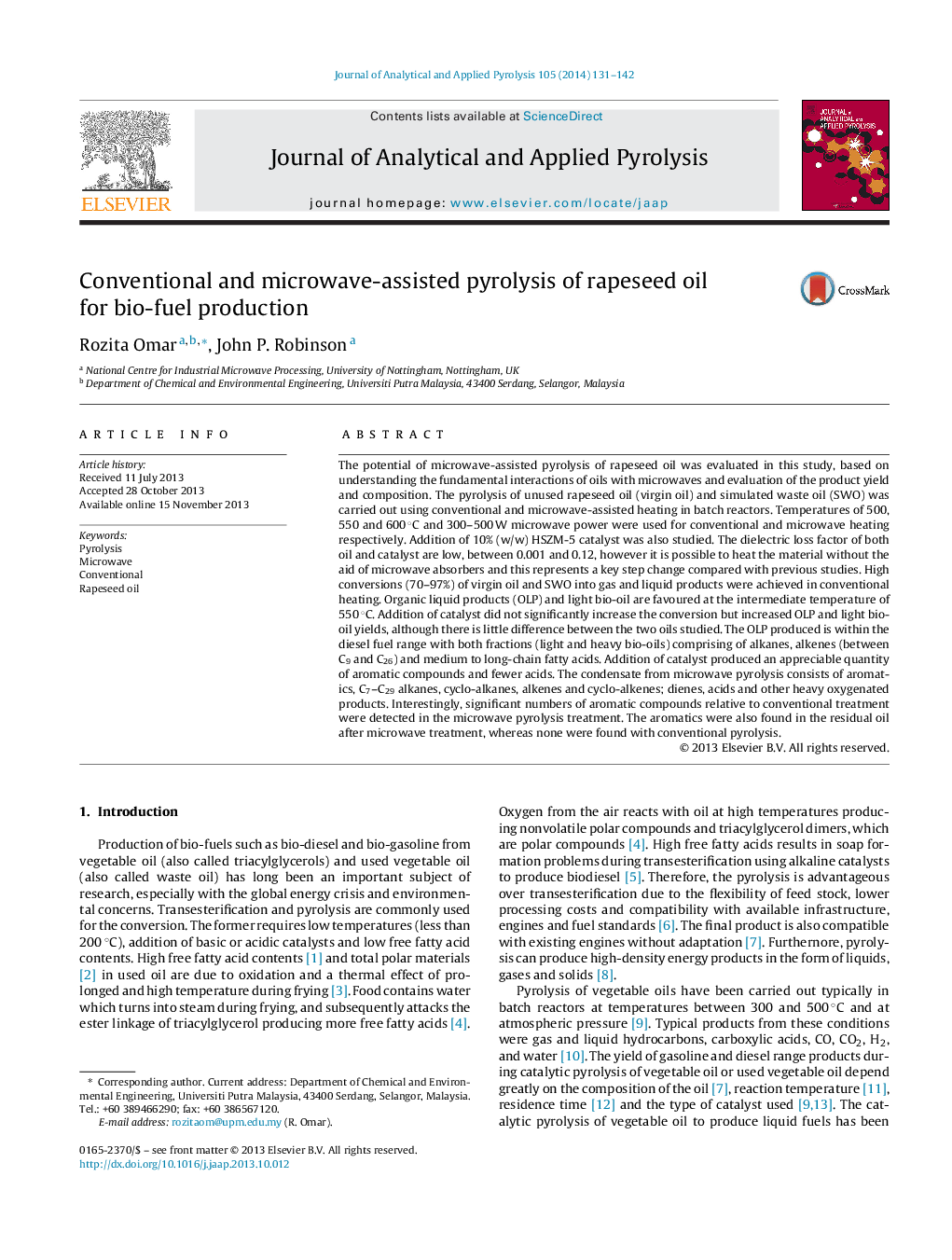| کد مقاله | کد نشریه | سال انتشار | مقاله انگلیسی | نسخه تمام متن |
|---|---|---|---|---|
| 1198361 | 1492972 | 2014 | 12 صفحه PDF | دانلود رایگان |
• Microwave-assisted heating of pyrolysis of used rapeseed oil.
• Microwave-assisted heating resulted in higher decomposition rate.
• Liquid fuel products from microwave pyrolysis are higher in quality.
The potential of microwave-assisted pyrolysis of rapeseed oil was evaluated in this study, based on understanding the fundamental interactions of oils with microwaves and evaluation of the product yield and composition. The pyrolysis of unused rapeseed oil (virgin oil) and simulated waste oil (SWO) was carried out using conventional and microwave-assisted heating in batch reactors. Temperatures of 500, 550 and 600 °C and 300–500 W microwave power were used for conventional and microwave heating respectively. Addition of 10% (w/w) HSZM-5 catalyst was also studied. The dielectric loss factor of both oil and catalyst are low, between 0.001 and 0.12, however it is possible to heat the material without the aid of microwave absorbers and this represents a key step change compared with previous studies. High conversions (70–97%) of virgin oil and SWO into gas and liquid products were achieved in conventional heating. Organic liquid products (OLP) and light bio-oil are favoured at the intermediate temperature of 550 °C. Addition of catalyst did not significantly increase the conversion but increased OLP and light bio-oil yields, although there is little difference between the two oils studied. The OLP produced is within the diesel fuel range with both fractions (light and heavy bio-oils) comprising of alkanes, alkenes (between C9 and C26) and medium to long-chain fatty acids. Addition of catalyst produced an appreciable quantity of aromatic compounds and fewer acids. The condensate from microwave pyrolysis consists of aromatics, C7–C29 alkanes, cyclo-alkanes, alkenes and cyclo-alkenes; dienes, acids and other heavy oxygenated products. Interestingly, significant numbers of aromatic compounds relative to conventional treatment were detected in the microwave pyrolysis treatment. The aromatics were also found in the residual oil after microwave treatment, whereas none were found with conventional pyrolysis.
Journal: Journal of Analytical and Applied Pyrolysis - Volume 105, January 2014, Pages 131–142
